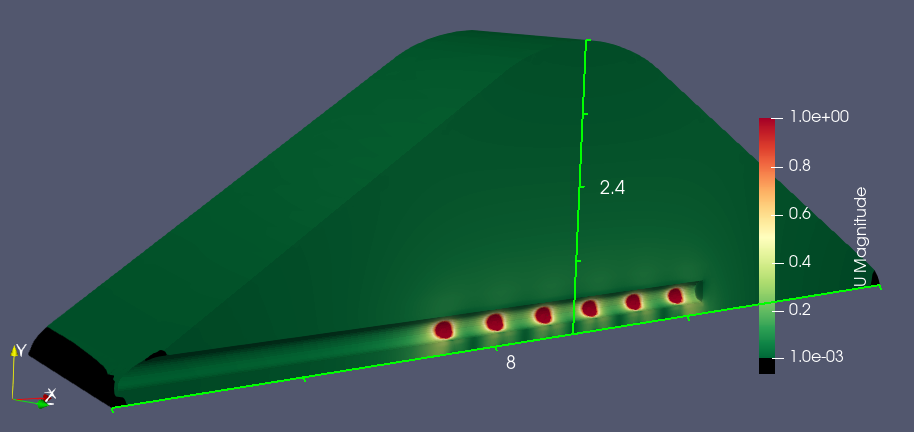OpenFOAM – FIFTH ATTEMPT. AIR FLOW THROUGH A VENTILATED SUGAR BEET CLAMP

It’s a very idealised version of a clamp, but it feels pretty OK.
The clamp is 8m wide, 2.4m high, and the cross section is 3m broad. The ventilation pipe is 20cm in diameter, and 5.5m long, from x = 0. There are 12 holes in the pipe, each 6cm in diameter and centered at 30 degrees below the horizontal.
The entire clamp has the same Darcy-Forechheimer values (around 500000 and 300, respectively), and the top of the clamp is the outlet. There is no ambient wind.
Air leaves the outlets at 20m.s-1. On the left side, this is at 20 down and 15 forward. On the right side, this is straight out along Z. The difference in the air velocity profiles of the two sides of the clamp is minimal.
In the image on the left, the clamp is cut at x=4.25. That is, at the fourth outlet hole. On the right, the clamp is cut at z= 1.6. That is, along the edge of the ventilation pipe.
Just as a reference, the non-ventilated clamp seems to have about 90% of velocities less than 1mm.sec-1. The two small back triangles in the corners of the image below are velocities below 1mm.sec-1. It looks the same across the whole clamp.

A final note. These velocities are what is called superficial velocity – the average velocity across the whole space assuming porosity = 1.00 (ie there is nothing in the way that the air need to squeeze between). Given porosity is closer to 0.45, and taking the packed-bed rule of thumb for tau (distance air needs to flow to move 1m through the profile) of 1.4, these velocities need to be multiplied by about 3 to get the actual physical velocity of the air, on average.

